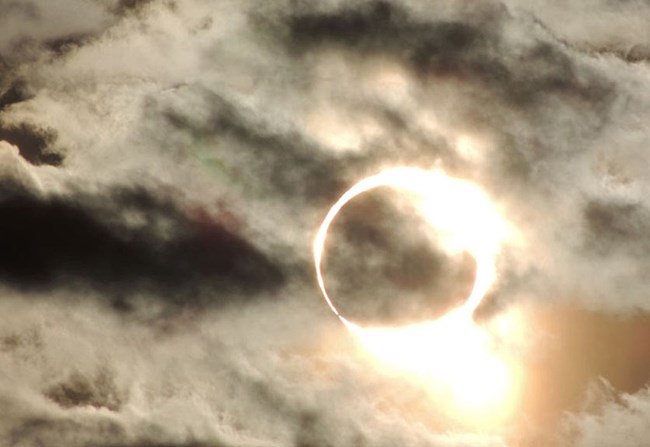
NPS Photo What is an Annular Solar EclipseThe word annular references a ring of bright sunlight, or annulus, known as a "ring of fire." This “ring of fire” is visible around the moon during the maximum phase of an Annular Solar Eclipse. Annular vs TotalAnnular solar eclipses and total solar eclipses are similar in that they occur when the moon passes between the sun and Earth. The moon temporarily blocks the sun and casts its shadow on Earth. The moon travels an elliptical orbit around the Earth so the distance between the two is not constant. From our perspective on earth when the moon is closer to us, it appears bigger and can block more of the sun’s light. It aligns perfectly with the sun resulting in a total solar eclipse. When the moon's orbit is further from the Earth it does not completely obscure the sun, thus an annular eclipse occurs. When and Where Will It HappenThe 2023 Annular Eclipse will be visible across three continents, through seven U.S. states and in thirty national park units before ending at sunset in the Atlantic Ocean. Click the following link to view a NASA map showing the eclipse path and the percentage of the event that will be seen from your location. Coming to Crater Lake?
|
| Crater Lake National Park | Canyon de Chelly National Monment |
| California National Historic Trail | Aztec Ruins National Monument |
| Tule Lake National Monument | Yucca House National Monument |
| Lava Beds National | Mesa Verde National Park |
| Great Basin National Park | Chaco Culture National Historical Park |
| Bryce Canyon National Park | El Mapais National Monument |
| Capitol Reef National Park | Petroglyph National Monument |
| Glen Canyon National Recreation Area | Salinas Pueblo Missions National Monument |
| Rainbow Bridge National Monument | Valles Caldera National Preserve |
| Canyonlands National Park | Bandelier National Monument |
| Natural Bridges National Monument | Manhattan Project National Historical Park |
| Hovenweep National Monument | Pecos National Historical Park |
| Old Spanish National Historic Trail | El Camino Real de Tierra Adentro NHT (NM) |
| Pony Express National Historic Trail | San Antonio Missions National Historical Park |
| Navajo National Monument | Padre Island National Seashore |
There are many other public lands that are in the path of the annular eclipse. In Oregon visit a state park. Get more information at Oregon Parks Forever.
Last updated: October 5, 2023
